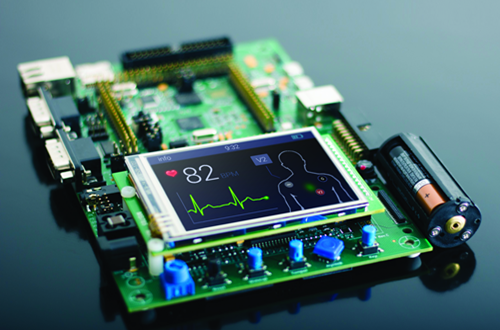

WHAT IS IoT?
The Internet of Things is the crossover between the physical and the digital world brought forth by the creation of devices other than PCs that connect to IP networks. Smartphones might be the most prominent example of IoT, but more recently, the development of apps for controlling home appliances and utilities or the introduction of wearable tech and vehicles with data accessibility are proving the potential of IoT is limitless.
Consumer electronics may be the first innovations that come to mind, but the manufacturing, transportation and healthcare industries top even personal cars and electronics in their command of the IoT revolution. As such, these large-scale industries require innovative PCB design that offers flexibility and high-speed connectivity to streamline processes on a global scale.
Recent years, IoT products are lovely and sometimes frustrating products. Design teams need to be multifunctional to design these products successfully. They need to get the hardware, embedded software, web platform and/or app, and mechanical enclosure perfect if they want to see market success. Problems in any of these areas mean your new product will be substandard and, eventually, competitive products will win market share.
So what does it take to ensure these products are designed successfully? IoT PCB design isn’t just about the hardware. It’s also about user experience and form factor. This means any IoT PCB design team needs to work across disciplines, and everyone needs a view of each other’s deliverables. Cloud platforms and on-premises networking platforms help make this type of collaboration possible.
If you’ve bought an IoT product recently, such as smart appliances or a home security system, you’ve probably had to download an app to your phone and create an account on the company’s website. These products can also have interesting enclosures that require exacting design specifications. These different aspects of an IoT product mean an IoT PCB design team needs to be multifunctional and need to collaborate for successful design. Your IoT design team will include people from the following disciplines:
· Electronics engineering. These folks need to design the schematic and ensure components chosen for the board are sourceable before handing a design off to the layout engineer and the software team.
· PCB layout engineering. This group is self-explanatory; they need to arrange components, route traces, ensure power/signal integrity, and all the other tasks that go into creating a great PCB layout.
· Software/mobile app engineering. The software team usually needs to wait until the electronics engineers finish the basic design, as this will determine which components they’ll be working with. If a web platform is involved, the web team can get started early, developing the basic web architecture, UI/UX, and API framework.
· Mechanical engineering. This group needs to work with the PCB layout engineers to ensure the product’s enclosure will fit the finished PCB and vice versa. For products that bend or fold, they also need to ensure any flex or rigid-flex boards will conform to the enclosure.
Recent IoT projects we’ve worked on required collaboration between myself (as lead engineer/manager), the PCB layout engineer, the embedded developer, the client’s mechanical designer, and the client’s software development team. These types of projects can get very complex when so many people are working on the same goal, and keeping everyone on the same page takes collaboration tools that can support all the different file types required to create a new platform.